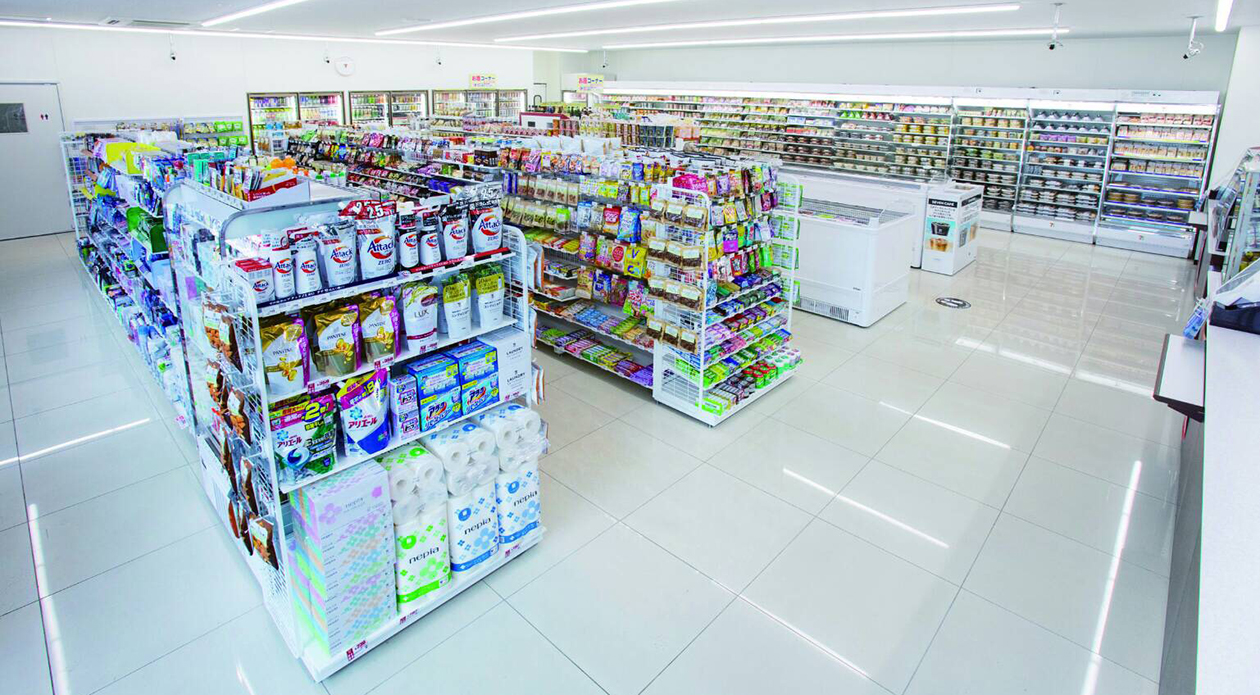Nationwide efforts
Today, significant efforts towards visitors overseas have being made throughout Japan. They are making the most out of traditional cultures of various places in Japan as well as in chain stores and convenience stores.
Efforts at convenience stores
The convenience stores with operations around all over Japan are seeking various approaches to visitors overseas as follows.
First, the multiple language translation services. Although the services through a translation business or translated brochures for visitors abroad with fixed phrases have been utilized in the past, the advent of portable translation machines including smartphones enabled store clerks to communicate easily with non-Japanese tourists.
Second, the setup of the souvenir areas. The convenience stores are making attempt to make the most of their characteristics by displaying their local specialties.
Third, the wide assortment of goods. The short-term travelers can also enjoy different kinds of goods by changing the varieties regularly. Also, the types of heated snacks are suitable for light meals such as breakfast or lunch. The daily necessaries such as umbrellas are available as well, which gives us the advantage of not going all the way to a supermarket to find them. Although it is not known whether these services are for the “Inbound”, they are unique to the visitors overseas because they are uncommon services abroad. Since they let the tourists taste Japanese food with a reasonable price, they are extremely satisfied with the services.
As described above, various efforts are being made at the convenience stores surrounding us.

Airports
Not to mention the signs in foreign languages, many non-Japanese staffs speaking various languages are employed at the airports to respond to their needs. Additionally, there are facilities and events where overseas tourists can experience things and enjoy. The huge facility where even a Japanese can enjoy is Haneda Airport.
In International Passenger Terminal at Haneda Airport, there are Japanese “Edo Koji” (Edo style alley) and “Nihon Bashi” (Japanese bridge), which overlooks the whole view of the terminal. Edo-Koji, finely recreated as Edo period’s streetscape, has various shops selling Japanese traditional handcrafts and collections of popular souvenirs, and further more cafes where fresh Macha (powdered green tea) is served. This area enables you to enjoy the things you can only experience in Japan. Also in the passenger’s terminal, there are experience-based spots such as Anime souvenir shops, Kabuki costume area and Kendama (Japanese cup and ball) challenging space. Other numerous hands-on events, such as Kimono fitting area, amuse visitors to Japan.
As stated above, many things are devised both in daily used stores and the facilities in order to increase the demand for “Inbound”.

Efforts in the transportation systems
Japanese transportation systems provide tours heading for “Tokyo 2020 Olympic and Paralympic Games”. These tours include not only bus tours visiting famous places of the inner city, but also viewing colorful lighted sights at night on a boat ride. By providing a special moment for the tourists, it helps increase the demand for “Inbound”. However, it is not only the transportation which makes effort towards “Inbound”.
Signs are being written in English on express highways and the Ministry of Land Infrastructure, Transport and Tourism has worked out a policy which allows tourists to use the Electronic Toll Collection (ETC) System unlimitedly with a fixed fee for a certain period. Furthermore, the rest stops are installing tablets with translation function for non-Japanese tourists to use.

Summary
As mentioned above, various efforts and improvements are being made nationwide in Japan for visitors overseas. While these improvements boost the increase of visitors to Japan, there have been some problems.
That is to say non-Japanese workers are taking over jobs which used to be the ones of Japanese workers. As the demand for “Inbound” increases, Non-Japanese people speaking Japanese language besides their mother tongues become important human resources. On the other hand, there is a fact that some Japanese workers are losing jobs. Measures against this problem may be the important key to support our industry.
Facing with such working problems, Japan’s efforts towards “Inbound” are gathering speed and developing with the arrangements for “Tokyo 2020 Olympic and Paralympic Games”. In order to become a tourist-friendly country, Japan may need to have a point of view of other countries and broaden its horizon.
